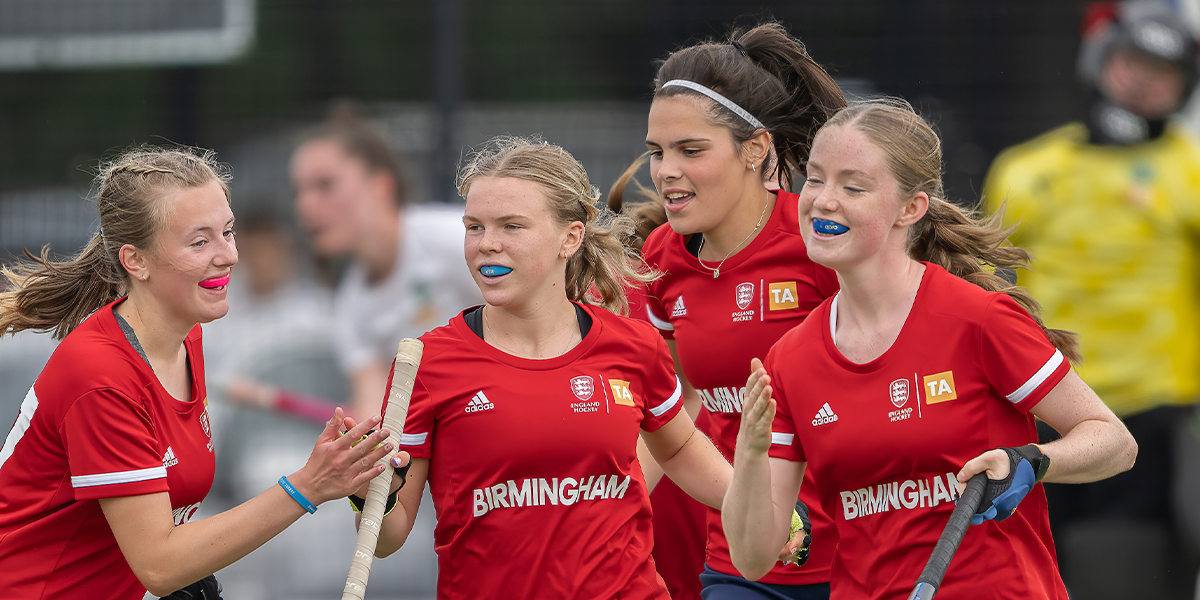Players have traditionally progressed along a linear pathway structure via county, regional, national teams. In contrast, there is not a definitive entry point to the new England Hockey Talent System. The Talent System is the combination of people and environments which provide opportunities for gifted players to develop their potential, with multiple ways to progress.
There are thousands of young people taking part in hockey who are all progressing at different rates and in different ways in different places. Therefore, there are many factors to consider when deciding the best environment for each person.
A young person’s experience is shaped by the environments they inhabit, so matching the environment to their physical, mental, and social needs at any point in time is critical to ensuring they can thrive, develop, and enjoy their time playing hockey.
Through accreditation and licensing, England Hockey will recognise club, school and county environments within the Talent System which provide high quality talent development environments. It will actively provide advice and guidance to players, parents and coaches on decisions aligned to training and competing within the most appropriate environments, to ensure that all aspects of a player’s development are considered.
However, England Hockey is not looking to instigate the movement of large numbers of players between clubs or stipulate the combination of club, school, and County Hockey for most junior players.
The RARE principles are intended to support players and parents to make good decisions about the most appropriate hockey environment(s) to attend.
These principles will guide the direction of a player’s journey and will be the backdrop to the conversations that occur between all parties engaged in a player's programme. With the player at the centre, this should ensure they are receiving the appropriate provision at any given time.
The principles will also help guide decisions about the best environment for a player on a dayto-day basis when there are multiple options available e.g. club and school hockey matches.
-
- What combination of club, school, County Hockey, Talent Academy, National programme environments are best for me/my child?
- Is it the right time for my child to move to a different club?
- When is the right time for this individual to begin playing adult hockey and where should this be?
- Should I accept/decline my invitation to join a Talent Academy on a full or affiliate basis?
- How does this session/activity/game impact on a player’s hockey programme and overall ‘load’?
- What is the optimum mix of hockey training and competition for this individual, distributed across multiple environments?
-
- Enable the player and their parents to take an educated decision, having acquired appropriate information and experience, and reviewed all the available options.
- Decisions will be player centred and based on what is best for the individual player at that moment in time.
- No party (coach, club, school, university, county, England Hockey) has ‘ownership’ of a player.
- The final decision about which hockey environments a player attends rests with the player (and their parents/guardians).
- England Hockey would like to help guide the process but not control it.
- A clear understanding that the opinion of all stakeholders in current and prospective environments is important in the decision-making process.
- All factors which make up a RARE assessment should be considered before a player changes environment.
-
In most cases, and if taken together, the factors listed provide a means for a comprehensive assessment as to whether a change in environment should be encouraged. If the change impacts most of the factors favourably then it is likely to be beneficial for the player.
The factors listed are not exclusive and there may be other reasons which support or oppose a decision about a temporary or permanent change to a player’s competition and/or training environment. The relative weighting of factors will differ for each player.
The assessment purposely doesn’t have a scoring matrix; however, players (parents) are encouraged to RAG rate (Red = negative, Amber= neutral, Green= positive) each factor and identify any which need to be weighted more heavily in their specific case.
Any decision will require judgment and consideration of the overarching question ‘Is this in the best interests of this player at this time?’
-
- What is a player’s biological age and stage of development? Local hockey should be encouraged for most players below the age of 14 and those at the ‘Developing Hockey’ stage of playing.
- Will a new environment provide more frequent and higher quality training opportunities with coaches who have a track record of progressing players at the player’s current stage of development?
- Will a new environment provide higher quality competition opportunities with sufficient pitch time in that higher quality competitive environment?
- What will be the sociological impact of the move? It is important that young players have a balanced lifestyle and time with their peer group and friends as well as those of a similar performance standard.
- Is the average total travel time per week required to attend the environment appropriate for the age/stage of the player?
- Is the overall life-load on the player appropriate, when considering hockey, other sports, academic commitments, travel, other responsibilities?
- Does the commitment to hockey versus other activities match the player’s aspirations and current stage of development? What is the opportunity cost of the move for the player?
- What are the financial implications (training and match fees, travel costs, club membership, scholarship opportunities)?
- What is the track record and philosophy of the new environment in developing young players in a safe, inclusive, and enjoyable environment?
- What is the timescale for the movement - if permanent/long term is this sustainable for the player and their support team?




